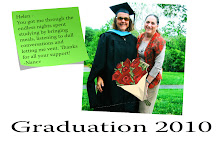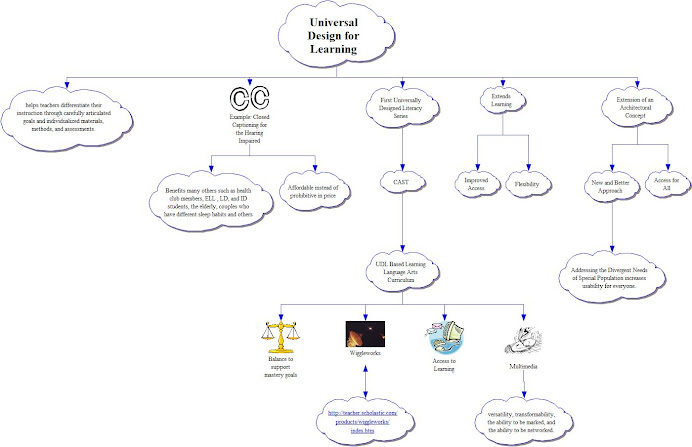Starting out in this course as a novice ( a rookie, a beginner ) makes it easy for me to be impressed and enthralled with all the incredible ideas for teaching via technology that are being presented in this class. I read the article, "Pay Attention" today and agree that we have to "engage, not enrage "students by meeting them where they're at: using ipods and cell phones, which are their constant companions. I do wonder why teachers cling to the old, though, rather than recognizing that texting is reading and writing and that students are bored by the traditional classroom approach.
From the very first day, with digital "tableaux", this has been a stimulating, inspiring experience - as we have been exposed to Photoshop and manipulating digital photos, reading about integrating and implementing technology, great examples for using blogging in "Teddy Bears Go Blogging, the use of Standards as we prepare our lessons, the issues about copyright law when using other people's material, the principles of Universal Design, using drama and knowing our students, I feel we have been provided with an enlightened background necessary for using technology in the classroom. It makes sense to learn about something before going out to teach students; this background knowledge is invaluable information.
Saturday, February 28, 2009
Sunday, February 22, 2009
"Added Value"
The techniques we have been learning about this semester in MD 400 definitely have "added Value" in that they offer ways to do things that would not otherwise be possible. Sharing here in this blog is one example of how to expand the potential forum to include anyone who has a computer, rather than restricting access to just the professor, or a few people in a class. This absolutely goes along with the idea of Universal Design for Learning because it is more easily accessible. Some of the components embedded in our digital imagery manipulation for the website we are working on - such as naming our saved images (using alternate text) so that they may be understood by the visually impaired using voice technology in place of read only also broaden the horizons for sharing information with people of all learning styles.
Monday, February 16, 2009
Student Standards
Since I work with all levels of ESL students, my choice of standards for them is taken from the National TESOL standards:
"Goal 3, Standard 3 -To use English in socially and culturally appropriate ways: Students will use appropriate learning strategies to extend their sociolinguistic and sociocultural competence."
This includes using technology, of course, which expands the potential for learning tremendously. My concerns ( and those of my colleagues ) are for students to reach proficiency and to score well on the standardized tests they are required to take at school. This places demands on them to master all the aspects of language that come naturally to a native speaker of English. ELL's need intense, explicit instruction of things like idioms because they have not been exposed to all of these non-literal forms of expression.
"Goal 3, Standard 3 -To use English in socially and culturally appropriate ways: Students will use appropriate learning strategies to extend their sociolinguistic and sociocultural competence."
This includes using technology, of course, which expands the potential for learning tremendously. My concerns ( and those of my colleagues ) are for students to reach proficiency and to score well on the standardized tests they are required to take at school. This places demands on them to master all the aspects of language that come naturally to a native speaker of English. ELL's need intense, explicit instruction of things like idioms because they have not been exposed to all of these non-literal forms of expression.
It is somehow satisfying to challenge the traditional classroom approach using the ubiquitous K-W-L charts to initiate lessons with asking HOW instead - and actually digging deep and wide to find the answers. Promoting this kind of investigative work is the way to find out about things, and it will revolutionize schools when implemented. As a team player, teaching in a school district, it is very difficult to introduce new ideas for teaching. Keeping one's job is part of the very real problem with the system. If enough of us push for open classrooms, we will see the results. Our world needs thinkers and doers who are seeking answers and are not afraid to look for them.
Wednesday, February 11, 2009
Inquiry Based Learning
As a teacher of ESL, I have used inquiry based learning many times in my efforts to help adult students find information they need for their families, or for employment, or to answer a question they have. Together we have found out many times that teacher and student learn together; it is a discovery based approach - not a traditional teacher as expert model. When working with children, it has been fun to map concepts together, with surprising results for everyone involved; finding connections, sharing background knowledge expands the possibilities as students brainstorm ideas with their classmates and the teacher. Everyone contributes in this approach.
Last semester, as a graduate student, I participated in an ethnographic study of senior citizens who were also first generation immigrants. This was inquiry based, using taped interviews done in the homes of the interviewees, and in one case, a senior center. Although a fellow student and I developed the interview questions, the answers we recorded stimulated further questioning and reflection. The questions evolved and continue, making it an open-ended study.
Last semester, as a graduate student, I participated in an ethnographic study of senior citizens who were also first generation immigrants. This was inquiry based, using taped interviews done in the homes of the interviewees, and in one case, a senior center. Although a fellow student and I developed the interview questions, the answers we recorded stimulated further questioning and reflection. The questions evolved and continue, making it an open-ended study.
Monday, February 2, 2009
Focus
Identifying and locating appropriate technology is a preliminary step necessary for planning the use of technology on the classroom. That is my focus at present and will be "on-going", of course, but will lay the groundwork for scaffolding with students in the future. This is part of Standard 2 of the National Standards for Technology Education. I believe it is the most important part of the process, because a teacher needs to be thoroughly prepared when infusing visual learning with digital imagery and with Inspiration. Both of these media can be used by the teacher in planning curriculum, as well as having students become involved in projects such as concept mapping new vocabulary or categorizing words.
Subscribe to:
Posts (Atom)


